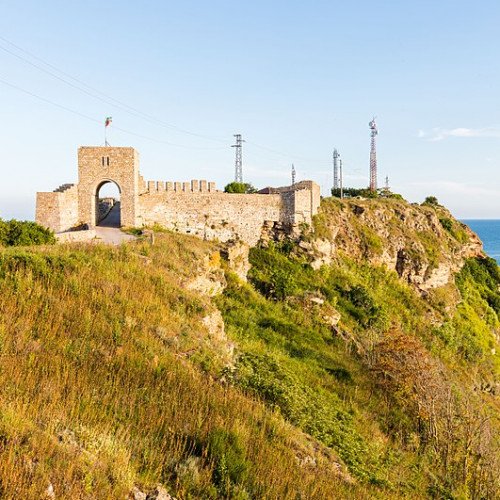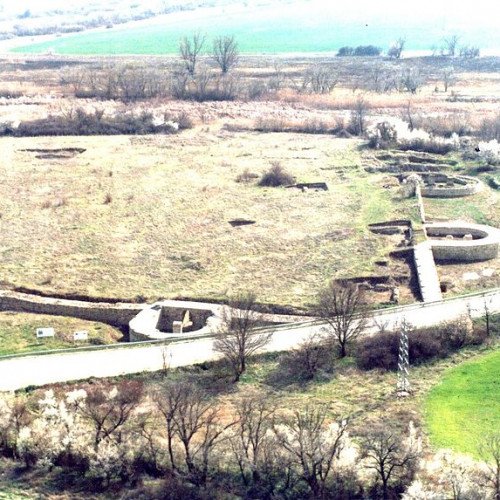Castles of "Bulgaria" KALIAKRA vs KOVACHEVSKO KALE

KALIAKRA
Kaliakra (Bulgarian: Калиакра; Romanian: Caliacra) is a long and narrow headland in the Southern Dobruja region of the northern Bulgarian Black Sea Coast, 12 kilometres (7 mi) east of Kavarna, 60 kilometres (37 mi) northeast of Varna and 65 kilometres (40 mi) southwest of Mangalia. The coast is steep with vertical cliffs reaching 70 metres (230 ft) down to the sea. Kaliakra is a nature reserve, where dolphins and cormorants can be observed. It sits on the Via Pontica, a major bird migration route from Africa into Eastern and Northern Europe. Many rare and migrant birds can be seen here in spring and autumn and, like much of this coastline, is home to several rare breeding birds (e.g. pied wheatear and a local race of European shag). The rest of the reserve also has unusual breeding birds; saker falcon, lesser grey shrike and a host of others. It also features the remnants of the fortified walls, water-main, baths and residence of Despot Dobrotitsa in the short-lived Despotate of Dobruja's medieval capital. The Bolata Cove with a small sheltered beach lies just north at the mouth of a picturesque canyon, also part of the nature reserve.
Statistics for this Xoptio

KOVACHEVSKO KALE
Kovachevsko kale (Bulgarian: Ковачевско кале) was a Roman city which lies 6 kilometres (4 mi) west of the Bulgarian town of Popovo. The Czech archaeologist Karel Škorpil called it Kovachoveshko kale, after the name of the nearby village, Kovachevets (at that time Kovachovets). It is notable for its massive defensive walls which have a roughly triangular plan and enclosed an area of more than 40 hectares (app. 10 acres). The stone walls are fortified with 17 U-shaped towers. There are two gates, one to the west and one to the north-east. The city is located on a flat terrain, naturally protected by rivers. The strong 3.20 m thick walls were built between 308 and 324 AD during the joint reign of Roman Emperors Constantine I the Great and Licinius after the Gothic Wars of 250-269. The city was set on fire in the Second Gothic War of 376-382 AD. It was slowly restored until the invasion of Attila the Hun around 447 AD. Finally it was destroyed by the Slavs and Avars in the 580s. Recent excavations by Veliko Tarnovo University “St. Cyril and St. Methodius" have revealed a huge Roman building from the 4th century AD within the walls which appears to have been a horreum (i.e. a granary). It measured over 60m x 25m, though it has not been fully exposed. It had a massive double door of 2.4m width. The walls of the building are 1.3m wide reinforced with external buttresses. It had two stories and a basement and was constructed with opus mixtum. The granary was plundered and set on fire around 378 AD probably by the Goths. An underground aqueduct built of clay pipes supplied the fortress with drinking water, descending from the northwest over several kilometres from Kalakoch hill.